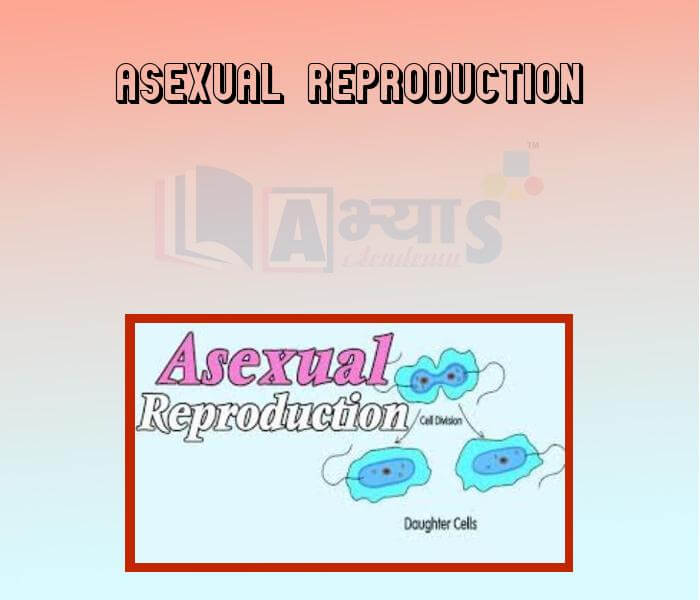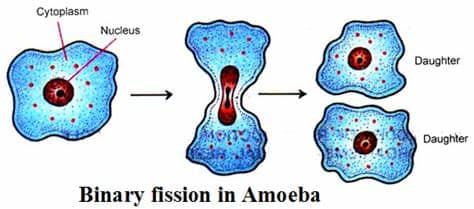Asexual Reproduction









Asexual Reproduction
All the living organisms grow old with time and ultimately die. In fact, every living organism remains alive on this earth for a limited period of time and then dies. So, new organisms have to be produced in place of those who die. The production of new organisms from the existing organisms of the same species is known as reproduction. In most simple words we can say that reproduction is the creation of new living things (from the existing living things). Actually, one of the most important characteristics of living organisms is their ability to reproduce more members of their species. Reproduction is essential for the survival of a species on this earth. So, living organisms produce more organisms of their kind to maintain the life of their species on this earth.
The process of reproduction ensures continuity of life on earth. For example, human beings reproduce by giving birth to babies (sons and daughters). These babies grow and ultimately become adults. So, when the old parents die, their sons and daughters keep living on this earth. These sons and daughters also reproduce by giving birth to more babies, and this process goes on and on. Thus, reproduction by human beings ensures that the human species will continue to exist on this for all the time to come. Similarly, cats reproductive by giving birth to kittens so that their species may live for ever. And dogs reproduce by giving birth to puppies so that their species may continue to live on this earth.
Reproduction may be defined as the process by which living things produce offspring (i.e. young ones) of their own kind. They reproduce by various means - for example, human beings and other mammals reproduce by giving birth to the babies, most birds reproduce by laying eggs and most plants reproduce through seeds.
All the different ways of reproduction can be divided into two main groups : asexual reproduction and sexual reproduction. Thus, there are two main methods of reproduction in living organisms :
(i) asexual reproduction, and (ii) sexual reproduction
This means that new living organisms (or animals) can be made either by the method of 'asexual reproduction' or by the method of 'sexual reproduction'. In order to understand this please keep in mind that certain organisms contain 'reproductive cells' (called 'sex cells' or 'gametes') in their bodies whereas some other organisms do not contain 'reproductive cells' ('sex cells' or 'gametes') in their bodies.
Asexual Reproduction
The production of a new organism from a single parent without the involvement of sex cells (or gametes) is called asexual reproduction. It is called asexual reproduction because it does not use special cells called 'sex cells' (or gametes) for producing a new organism. In asexual reproduction, a part of the parent organism separates off and grows into a new organism. Thus, in asexual reproduction, only parent is needed to produce a new organism. But no sex cells are involved in asexual reproduction. The offspring produced by this process are identical to their parents. Some of the examples of asexual reproduction are : binary fission in Amoeba; and budding in Hydra. Other different type of asexual reproduction are fragmentation, spore formation and vegetative propagation.
In case of plants another type of asexual reproduction known as vegetative reproduction or vegetative propagation . In this process offsprings are produced from the fragments of the parent plants. Different type of vegetative propagation occur based on the part used. Some of them are
Asexual reproduction is the simplest method of reproduction. It takes place mainly in those animals whose bodies have a simple structure. In asexual reproduction, the young one (or offspring) produced is an exact copy of the parent.
Sexual Reproduction
The production of a new organism from two parents by making use of their sex cells (or gametes) is called sexual reproduction. In sexual reproduction, the sex cell of one parent fuses with the sex cell of the other parent to form a new cell called 'zygote'. This zygote then grows and develops to form a new organism. Thus, in sexual reproduction, two parents are needed to produce a new organism.


(a) (b)
In the image (a) binary fission of Ameoba is shown where single parent body divides into two daughter cells. In the image (b) different type of vegetative propagation are shown based on the part used.
IMPORTANT TERMS :
_______________ Reproduces only asexually. | |||
| Right Option : B | |||
| View Explanation | |||
Identify from the following, a correct statement with reference to asexual reproduction | |||
| Right Option : B | |||
| View Explanation | |||
seed for reproduction is not an example or feature of ______ | |||
| Right Option : A | |||
| View Explanation | |||
Students / Parents Reviews [10]
Being a parent, I saw my daughter improvement in her studies by seeing a good result in all day to day compititive exam TMO, NSO, IEO etc and as well as studies. I have got a fruitful result from my daughter.

Prisha Gupta
8thA marvelous experience with Abhyas. I am glad to share that my ward has achieved more than enough at the Ambala ABHYAS centre. Years have passed on and more and more he has gained. May the centre flourish and develop day by day by the grace of God.

Archit Segal
7thMy experience was very good with Abhyas academy. I am studying here from 6th class and I am satisfied by its results in my life. I improved a lot here ahead of school syllabus.

Ayan Ghosh
8thAbout Abhyas metholodology the teachers are very nice and hardworking toward students.The Centre Head Mrs Anu Sethi is also a brilliant teacher.Abhyas has taught me how to overcome problems and has always taken my doubts and suppoeted me.

Shreya Shrivastava
8thMy experience with Abhyas is very good. I have learnt many things here like vedic maths and reasoning also. Teachers here first take our doubts and then there are assignments to verify our weak points.

Shivam Rana
7thIt has a great methodology. Students here can get analysis to their test quickly.We can learn easily through PPTs and the testing methods are good. We know that where we have to practice

Barkha Arora
10thIt was a good experience with Abhyas Academy. I even faced problems in starting but slowly and steadily overcomed. Especially reasoning classes helped me a lot.

Cheshta
10thIt was good as the experience because as we had come here we had been improved in a such envirnment created here.Extra is taught which is beneficial for future.

Eshan Arora
8thI have spent a wonderful time in Abhyas academy. It has made my reasoning more apt, English more stronger and Maths an interesting subject for me. It has given me a habbit of self studying

Yatharthi Sharma
10thAbhyas Methodology is very good. It is based on according to student and each child manages accordingly to its properly. Methodology has improved the abilities of students to shine them in future.
